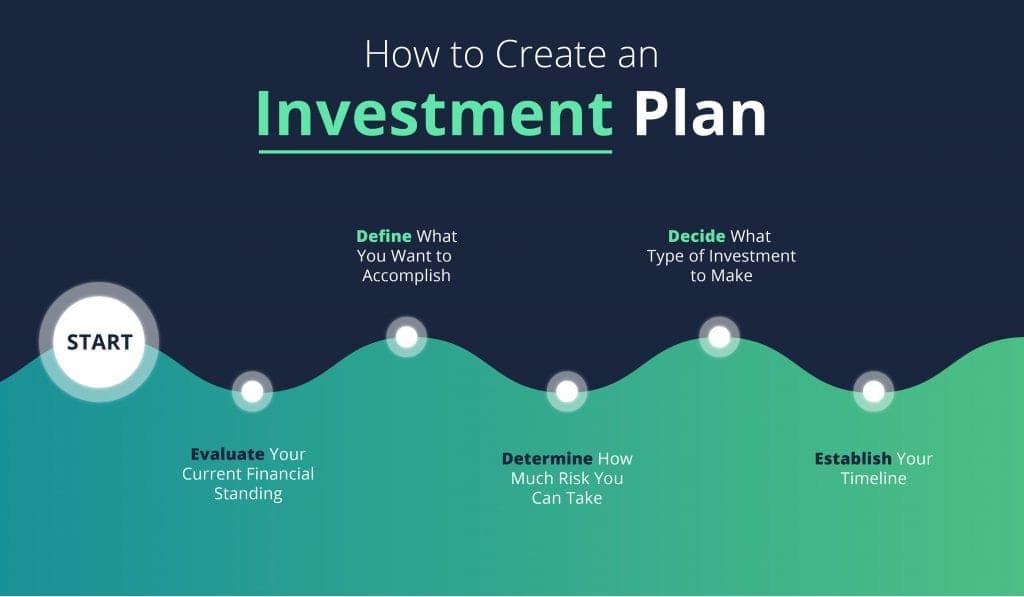목차
- Understanding Investment Basics:
- Types of Investments: Stocks, Bonds, Real Estate, and More:
- Investment Strategies for Beginners:
- Advanced Investment Techniques:
- The Role of Technology in Modern Investing:
- Creating Your Personalized Investment Plan:
In today’s financial landscape, mastering investment strategies is crucial for wealth creation. This article explores various investment styles, tips for beginners, and advanced techniques to help readers effectively manage their finances and grow their wealth. Join us as we dissect essential principles of finance and investment strategies.
Understanding Investment Basics:
Understanding the foundations of investment is crucial for anyone looking to build wealth through effective financial strategies. Key investment concepts such as risk, return, asset classes, and portfolio diversification form the basis for sound investment decisions.
Risk refers to the potential for loss or lower-than-expected returns on an investment. Understanding risk allows investors to make informed choices about where to allocate their funds. Higher potential returns often come with higher risks, which can include market volatility and the possibility of losing principal. Conversely, lower-risk investments tend to produce more stable but often lower returns.
Return, on the other hand, is the gain or loss made on an investment relative to the amount of capital invested. This is typically measured as a percentage. Knowing the expected return helps investors choose the right types of assets based on their financial goals and risk tolerance.
Asset classes categorize different types of investments, such as stocks, bonds, real estate, and cash. Each asset class behaves differently under various market conditions. For instance, stocks usually provide higher long-term returns compared to bonds, but they also carry more short-term volatility. Understanding the characteristics of various asset classes helps investors diversify their portfolios effectively.
Portfolio diversification, the process of spreading investments across various asset classes, aims to reduce overall risk. A well-diversified portfolio can protect against market downturns because different assets often perform differently under the same economic conditions. For example, when stocks are down, bonds might be up, providing a cushion against losses.
Overall, grasping these fundamental concepts is essential for formulating successful investment strategies. Investors who take the time to understand risk, return, asset classes, and the importance of diversification are better positioned to build wealth over time.
![]()
Types of Investments: Stocks, Bonds, Real Estate, and More:
다양한 투자 유형이 있으며, 각 유형마다 고유한 장단점이 존재합니다. 주식, 채권, 부동산 그리고 대체 투자 각각의 특징을 살펴보겠습니다.
주식은 회사의 소유권을 나타내며, 장기적으로 높은 수익을 기대할 수 있는 투자 옵션입니다. 하지만 경제 상황에 따라 변동성이 크고, 손실 위험이 크다는 단점이 있습니다. 주식은 성장성이 높은 산업에 투자하거나 기업의 재무 상태가 안정적인 회사를 선택해 투자하는 것이 좋습니다.
채권은 정부나 기업이 발행하는 빚으로, 정기적으로 이자를 지급받는 안정적인 투자입니다. 주식에 비해 수익률은 낮지만, 그만큼 리스크도 적습니다. 경제 불황 시 안정적인 수익을 원하는 투자자에게 적합합니다.
부동산은 실물 자산으로 장기적인 가치 상승이 기대되는 분야입니다. 또한 임대료를 통한 안정적인 수익을 올릴 수 있는 장점이 있습니다. 그러나 초기 투자금이 크고, 유지 관리 비용이 발생하여 자본을 묶어두는 단점이 있습니다.
대체 투자로는 원자재, 헤지펀드, 또는 인프라 투자 등이 있습니다. 이런 투자들은 주식이나 채권에 비해 낮은 상관관계를 가지므로 포트폴리오 다각화의 효과가 있습니다. 그러나 시장에 대한 이해와 전문 지식이 필요하여, 투자 접근이 쉽지 않다는 점이 있습니다.
다음 표를 통해 각 투자 유형의 주요 장단점을 비교해 보겠습니다.
이러한 각 투자 옵션을 이해하고 자신의 투자 철학과 목표에 맞춰 적절히 조합하여 활용하는 것이 중요합니다.
Investment Strategies for Beginners:
Investing can seem overwhelming for beginners, but establishing a solid foundation is crucial for successful wealth growth. First, set clear financial goals. Whether your aim is to save for retirement, a home, or education, defining these objectives gives direction to your investment strategy.
Next, understand your time horizon. Are you investing for the short term or the long term? Short-term investments often require more conservative strategies, while long-term investing can afford more risk. This understanding helps align your risk tolerance with appropriate investment choices.
Resource management is equally important. Determine how much money you can invest without compromising your everyday living expenses. Start small, perhaps with a portion of your income, and gradually increase your contributions as you become more comfortable.
Diversification is a key principle for beginners. Spread your investments across different asset classes such as stocks, bonds, and real estate to mitigate risks. It’s also wise to educate yourself continuously—read books, attend workshops, or seek advice from professionals to build knowledge and confidence.
For a visual aid to facilitate understanding, the table below outlines essential steps for beginner investors:
Lastly, consider seeking mentorship or advice from experienced investors who can offer insights and guidance tailored to your individual circumstances. Building wealth through investments is a journey, and taking these initial steps can set you on the right path.

Advanced Investment Techniques:
Investing can be an exciting journey, especially for seasoned investors who wish to explore more advanced techniques. Among these techniques are options trading, short selling, and leveraged investing. Each of these carries its own unique risks and rewards, requiring careful consideration before diving in.
Options trading involves buying the right, but not the obligation, to purchase or sell an asset at a predetermined price before a specific date. This strategy can offer high returns, but it also comes with the risk of losing the entire premium paid for the options if they expire worthless. Therefore, understanding the underlying asset and market trends is crucial.
Short selling allows investors to profit from a decline in the price of an asset. This involves borrowing shares to sell them at the current market price, with the intent of buying them back at a lower price. While the potential for profit is significant, the risks are equally high. If the asset’s price rises instead of falls, the losses can be unlimited, as there is no cap on how high the price can go.
Leveraged investing entails borrowing capital to increase the potential return on an investment. For example, using margin trading allows investors to buy more of an asset than they could with their own capital alone. While leveraging can amplify gains, it can also lead to significant losses if the market moves against the investor’s position. This technique requires a sound understanding of both the investment and the market conditions to manage risks effectively.
To encapsulate the potential rewards and the risks associated with these techniques, let’s review the following table:
In conclusion, while advanced investment techniques can provide significant opportunities for wealth growth, they come with substantial risks. Investors should approach these strategies with caution, ensuring they have a comprehensive understanding of the associated risks and a plan for mitigating them. Preparing oneself through research and experience can greatly improve the chances of success in these complex investment arenas.
The Role of Technology in Modern Investing:
In recent years, technology has fundamentally changed how individuals invest. Online trading platforms have made it easier for anyone with an internet connection to buy and sell assets at the click of a button. Investors can now access global markets from the comfort of their homes, eliminating the need for physical brokerage services. This shift has increased trading volume and broadened participation in financial markets.
Furthermore, robo-advisors, powered by algorithms and artificial intelligence, assist investors in managing their portfolios. These automated platforms assess individual financial goals and risk tolerance, offering personalized investment strategies at a fraction of the cost of traditional financial advisors. The efficiency and accessibility of robo-advisors have democratized investing, allowing everyday people to benefit from investment management previously reserved for the wealthy.
Additionally, financial technology (FinTech) companies are disrupting traditional banking and investment practices by providing innovative apps and services that enhance user experience. These technologies often include budgeting tools, real-time analytics, and performance tracking, which empower users to make informed decisions quickly. The integration of big data analytics also enables more refined investment strategies, as investors can analyze market trends and forecasts.
To better illustrate the impact of these advancements, refer to the following table highlighting the key features of traditional investment methods versus modern technology-driven approaches.
Overall, the role of technology in modern investing cannot be overstated. Its ability to make investing more accessible and efficient has empowered a new generation of investors. As technology continues to advance, it will undoubtedly shape the future of investing, presenting both opportunities and challenges for traditional financial institutions.

Creating Your Personalized Investment Plan:
Creating a personalized investment plan is an essential step towards achieving your financial goals. This chapter will guide you through the process of tailoring your investment strategies based on your unique financial situations, objectives, and risk tolerance.
To start designing your personalized investment plan, you first need to assess your current financial position. Begin by listing your assets, liabilities, income, and expenses. This will give you a clear view of your net worth and cash flow, which are critical in determining how much you can invest.
Next, it’s important to set specific financial goals. Consider what you want to achieve through investing. For example, your goals could range from saving for retirement, buying a home, funding your children’s education, or building an emergency fund. Clearly defining your goals can help you tailor your investment approach. Use the SMART criteria—Specific, Measurable, Achievable, Relevant, and Time-bound—to structure these goals effectively.
Another crucial aspect is understanding your risk tolerance. Everyone has a different capacity for risk based on their personality, time horizon, and financial situation. You can evaluate your risk tolerance by asking yourself questions such as how you would react to fluctuations in your investment value or how long you plan to invest before withdrawing funds.
Creating a diversified investment portfolio is key to managing risk. Once you have established your goals and understood your risk tolerance, determine the types of investments that suit your profile. A typical portfolio might include a mix of stocks, bonds, real estate, and cash equivalents. For instance, a young investor with a long time horizon may lean more heavily toward equities, while those closer to retirement might prefer more stable assets.
To help illustrate this process, consider the following simple template for your investment plan:
Using this template, you can keep track of your investment planning process and make adjustments as necessary. Finally, regular reviews and adjustments to your investment plan are vital as your financial circumstances, goals, and market conditions change over time. By following these steps, you can create a comprehensive investment plan that aligns with your personal financial objectives.

By equipping yourself with a well-structured investment plan, you can navigate the complexities of investing with confidence and clarity.
In conclusion, effective investing requires a deep understanding of various strategies and market dynamics. By mastering the basics, utilizing advanced techniques, and adapting to technological changes, individuals can create a robust investment plan that aligns with their financial goals. Remember, successful investing is a journey that benefits from continuous learning and adjustment.
Comprehensive Guide to Investment Strategies
Investment Strategies,Personal Finance,Wealth Management,Financial Planning,Stock Market,

